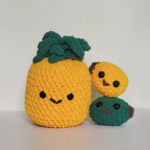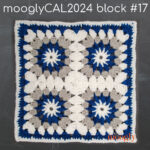Decreases are techniques used in knitting to reduce the number of stitches in a row, allowing you to shape your fabric.
They’re essential for creating fitted garments, shaping sleeves, forming necklines, and adding decorative elements to your knitting projects.

Frustrated Teacher Quits In Disgust, Sells The Farm, Moves The Family Halfway Across The World And… Starts Knitting
Understanding Decreases in Knitting
There are two main types of knitting decreases: right-leaning and left-leaning.
Right-Leaning Decreases
The easiest and most common right-leaning decrease is K2tog (knit two together). This is perfect for the left side of a sweater or other knitting garments.
K2tog is often used in various knitting patterns because it creates a neat and balanced right-leaning decrease.
Left-Leaning Decreases
The SSK (slip, slip, knit) is a popular left leaning decrease.
K2tog tbl (knit 2 together through the back loop) is a common left-leaning decrease.
Sometimes you may encounter patterns with decreases on the wrong side. Use P2tog for a left-leaning decrease in these cases.
Types Of Knitting Decreases
Knit Two Together (K2tog)
A common knit decrease is the Knit Two Together (K2tog). It’s perfect for beginners as a simple and effective method.
I would insert my knitting needle through two stitches and knit normally. It pairs well with the SSK for a balanced look.
Slip, Slip, Knit (Ssk)
Another essential knitting technique in my toolbox is the Slip, Slip, Knit (SSK). This method complements the K2tog nicely with a left-leaning decrease.
To execute an SSK, slip two stitches separately from left to right, Put left needle through the fronts of both slipped stitches. Wrap yarn around the right needle and pull the loop through both slipped stitches.
Centered Double Decrease (Cdd)
For a more advanced knitting project, I might consider using a Centered Double Decrease (Cdd). This technique removes two stitches at once while staying centered for a balanced decrease. To do this, I slip two stitches together as if to knit, then knit the next stitch, and finally, pass the two slipped stitches over the knitted one.
Decreasing Three Stitches (K3tog)
I opt for Decreasing Three Stitches (K3tog) to reduce stitch count further. This technique is like K2tog but with three stitches. The way I do it is I insert my needle through three stitches and knit normally. K3tog is great for shaping larger projects.
Slip, Knit, Pass Over (Skpo)
Another alternative to SSK is the Slip, Knit, Pass Over (Skpo) technique. To decrease, slip one stitch, knit the next, and pass the slipped stitch over. The Skpo decrease is both a simple and effective way for knitting variety.
Types Of Purl Decreases
Purl Two Together (P2tog)
It’s simple and creates a left-leaning decrease on the wrong side. To work a purl two together, insert the needle into two stitches simultaneously and purl them together. This technique keeps my knitting projects looking clean.
Slip, Slip, Purl (Ssp)
Ssp decreases purl stitches and creates a right-leaning decrease. I slip two stitches knitwise, return them to the left needle, and purl them together through their back loops. This technique is slightly more complex than p2tog, but it gives a neat finish on the right side of my knitting.
Decreasing Three Stitches (P3tog)
The P3tog technique helps me decrease three stitches instead of two. Instead of inserting my needle into two stitches like p2tog, I insert it into three and purl them together. P3tog creates a bulkier decrease for decorative knitting patterns.
Slip, Knit, Pass Over (Skp)
Skp is a combined decrease method for balancing knitted and purled stitches. To work an skp, slip a stitch knitwise, knit the next stitch, and pass the slipped stitch over. This technique creates a left-leaning decrease in my knitting.
Slip, Slip, Purl-Knit (Sspk)
Sspk is a purl decrease that combines ssp and skp. I slip two stitches knitwise, return them to the left needle, and then purl one and knit one. This technique creates intricate patterns and adds variety to my knitting projects.
The methods outlined above are great ways to decrease your stitches. The pattern you are working on will have the preferred way to decrease in the instructions.



